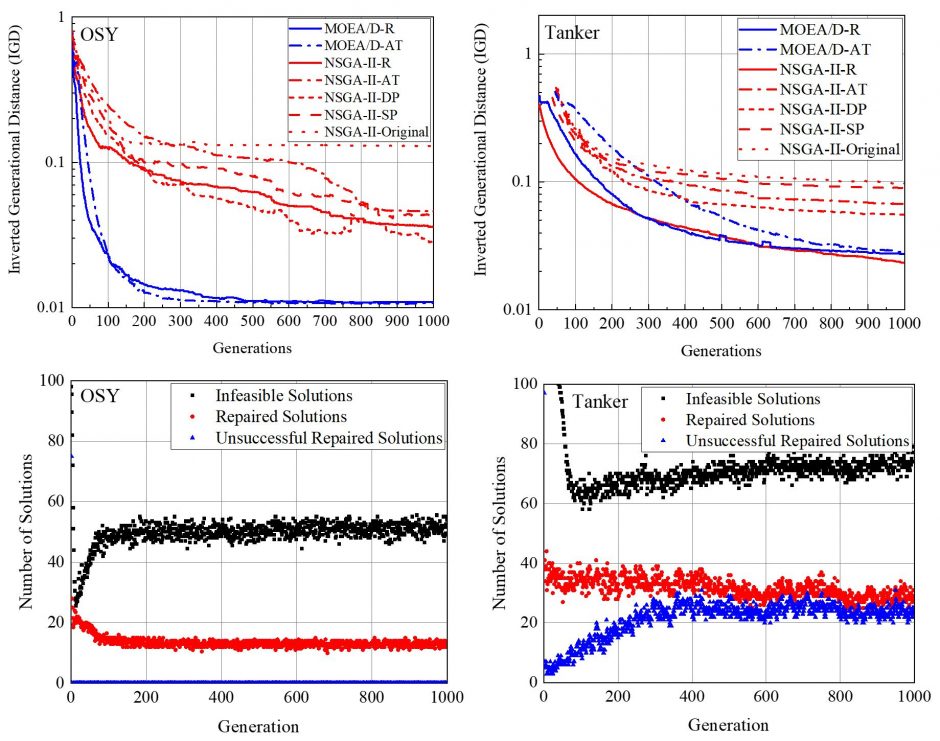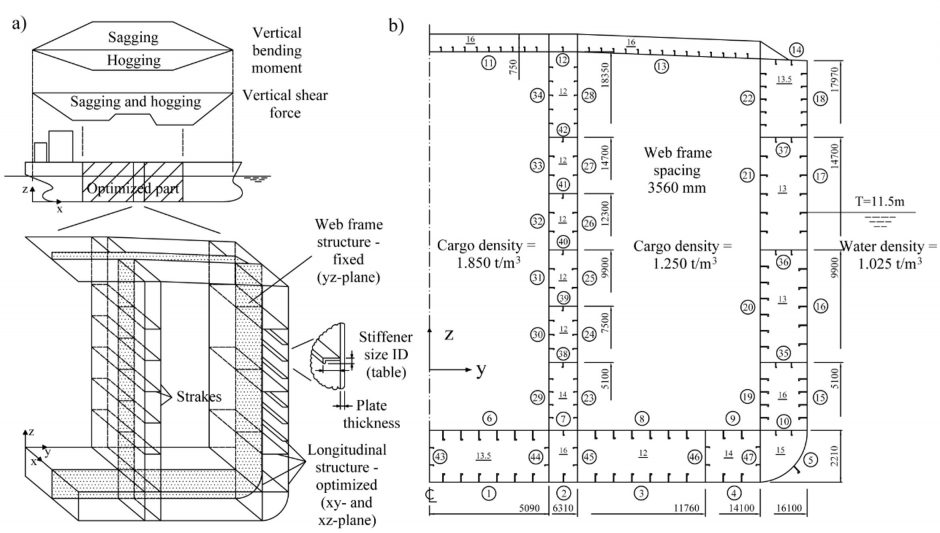Design and development of various products needs complete and timely information about the benefits of various tradeoffs between design alternatives. This is where global optimization algorithms can assist by finding the alternatives which satisfy all requirements (strength, prevention of failure and production, for example). These algorithms are inspired by processes in nature and physics. There is large discrepancy between their results in some cases, as we can see on this figure where structure of a tanker was optimized. Further, these algorithms are computationally very inefficient for real-life engineering problems. This is where our research group is developing new approaches to improve their efficiency and efficacy.

Engineering problems involve nonlinear constraints that make it difficult for swarm and evolutionary algorithms to find global optima. Our research deals with their constraint-handling techniques, proposing new approaches that utilize information contained in infeasible solutions encountered during optimization. This means allows reduction of function evaluations, or achieving better convergence and spread of the Pareto front.
See:
Samanipour, F., Jelovica, J. “Adaptive repair method for constraint handling in multi-objective genetic algorithm based on relationship between constraints and variables”. Applied Soft Computing, Vol. 90, 2020, https://doi.org/10.1016/j.asoc.2020.106143
Cai, Y., Jelovica, J. “Repair-Based Constraint Handling in Optimization: Using Artificial Neural Network to Define Variable-Constraint Mapping“. SSRN, 2022
Jelovica, J., Cai. Y. “Adaptive Repair-Based Constraint Handling in MOEA/D for Complex Structural Optimization“. SSRN, 2022.
Cai, Y., Jelovica, J. “Adaptive Constraint Handling in Optimization of Complex Structures by Using Machine Learning”. Proc. 40th International Conference on Ocean, Offshore and Arctic Engineering (OMAE), June 2021

To reduce computational time, reduced-order/surrogate models can be used in optimization. We have been advancing structural models based on beam and plate theories, and finite elements. We are now extending that with data-driven models for shape optimization and underwater noise prediction.
See:
Mallik, W., Farvolden, N., Jelovica, J., Jaiman, R.K. “Deep convolutional neural network for shape optimization using level-set approach“, arXiv:2201.06210
Mallik, W., Jaiman, R.K., Jelovica, J. “Convolutional recurrent autoencoder network for learning underwater ocean acoustics“, arXiv preprint arXiv:2204.05573
Klanac, A., Ehlers, S., Jelovica, J. “Optimization of crashworthy marine structures”, Marine Structures, Vol. 22 (4), p.670-90, 2009, https://doi:10.1016/j.marstruc.2009.06.002
Klanac A., Jelovica J. “Vectorization and Constraint Grouping to Enhance Optimization of Marine Structures”, Marine Structures, Vol. 22 (2), p.225-45, 2009, https://doi.org/10.1016/j.marstruc.2008.07.001
